How'd he do it? Wildlife photographer shares insights on 5 stunning wading bird images
Nesting season for wading birds is underway in Southwest Florida. The window of opportunity to see an amazing array of birds − like every type of heron, snowy and great egrets, roseate spoonbills and many more − is open and will last until early summer.
Andrew West, an award-winning photographer for The News-Press and Naples Daily News, has been spending time in the field recently looking to create stunning images of these fabulous birds. They are colorful, unique, magnificent creatures and they are a big part of what makes Southwest Florida the paradise it is.
The five photos you are about to see, taken at Lakes Park in Fort Myers, J.N. "Ding" Darling National Wildlife Refuge and J.N. "Ding" Darling National Wildlife Refuge's Bailey Tract on Sanibel Island, were selected by West and include his expert perspective from decades of photographing wildlife here. You might even learn something that you can apply to your own bird photography. We have also included a "degree of difficulty" for each image so you can understand the range of challenges each image presents.
NOTE TO READERS: West wants to remind everyone that it is important to give these birds their space. He recommends you shoot using a long lens. Scaring or disturbing birds in some way could result in the parents flying away and then the babies become susceptible to predators. Always be aware of your surroundings.
What is a wading bird?
Wading birds include herons, wood storks, roseate spoonbills and egrets. It is a classification of birds that usually feature longer legs so they can wade through water to get prey.
The Tricolored Heron
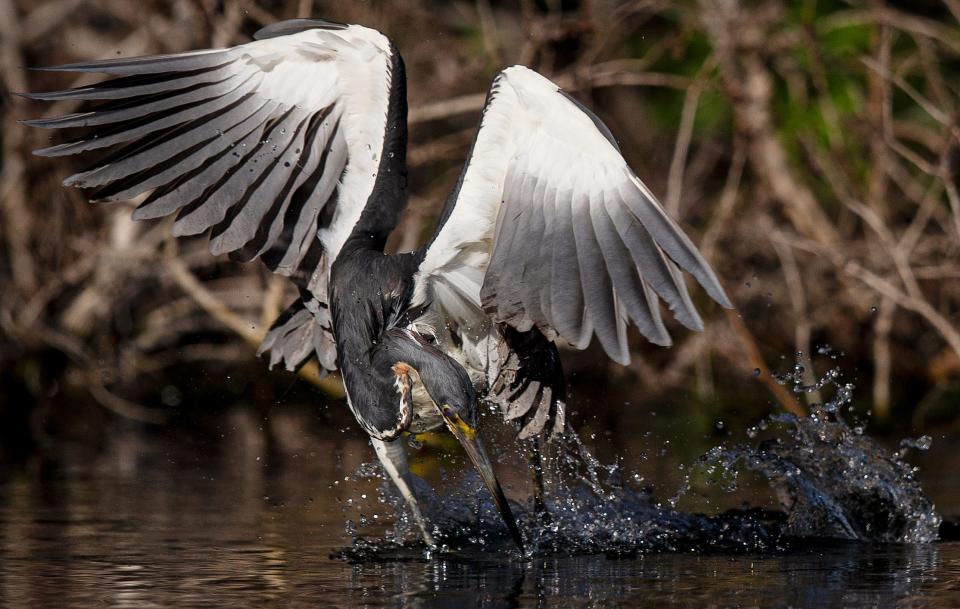
THE MOMENT: I was hearing a cacophony of noise coming from a rookery at Lakes Park. I saw several great blue herons, snowy egrets, night herons and ibis. They were all around nests feeding and flying. I focused on this tricolored heron. It came pretty close to me. It was perched right above the water line and going tree limb to tree limb dragging its feet in the water looking for food. When they move across the water like that you have to be prepared because the movement is really quick. You hope the autofocus of the camera can keep up with the movement and direction of the subject.
THE DEGREE OF DIFFICULTY (OUT OF 10): 9
The Green Heron
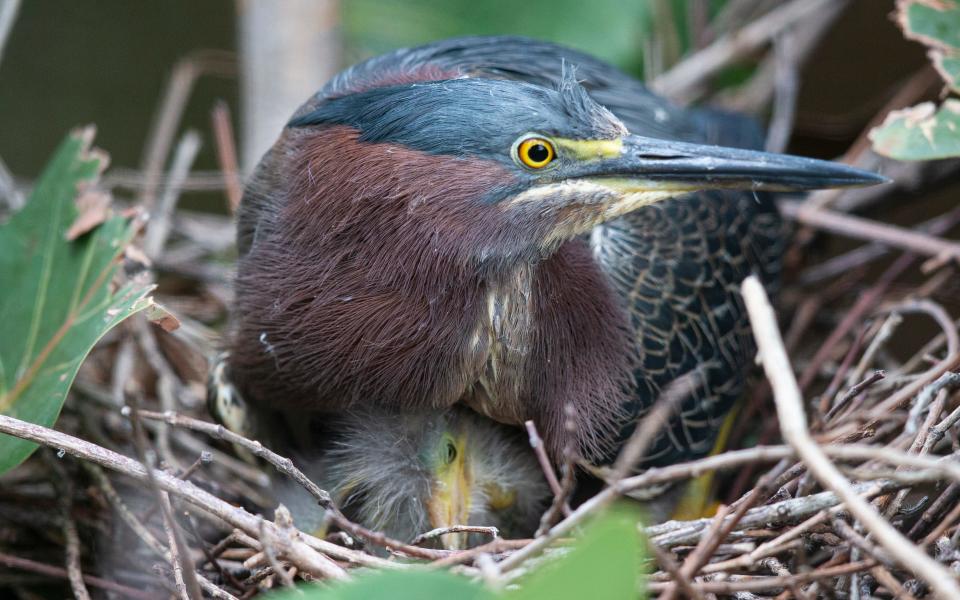
THE MOMENT: Tender moments can occur between adult birds and their offspring. It just takes patience. These babies were passed out on an overcast day when mom or dad came by to cover them up. One of the newly hatched young ones briefly opened its eyes before snuggling in with its siblings. These guys are some of the smallest herons and are usually pretty stealthy. To see one sitting on a nest is pretty special.
DEGREE OF DIFFICULTY: 6-7
The Great Blue Heron
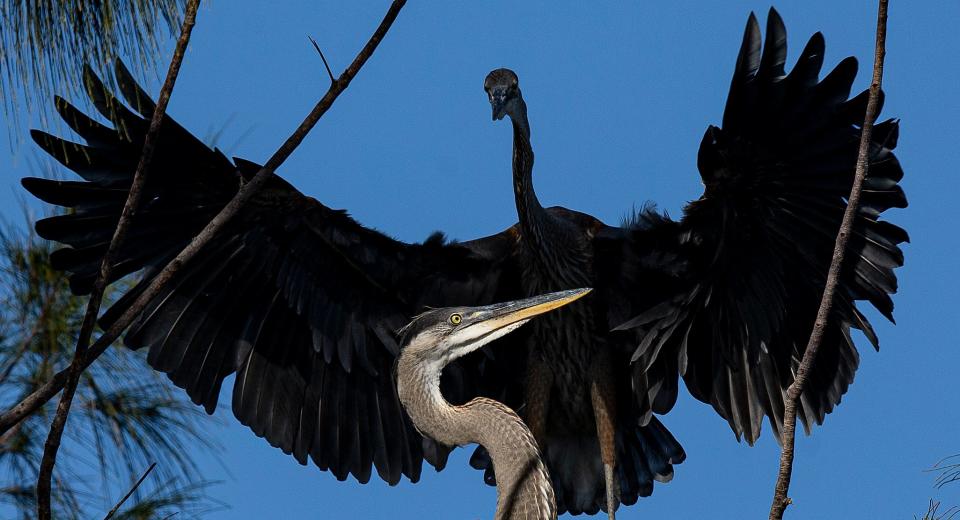
THE MOMENT: This nesting pair of great blue herons is in an area where there is a lot of nesting activity for wading birds including night herons, ibis, snowy egrets among others at Lakes Park. I was lucky to get this moment with one of the birds in the foreground with light on it and the other one in shadow. It adds another dimension and has some artistic value. When I am out shooting, I try to add different dimensions with light, texture and nuance to create images that sometimes are a little different.
DEGREE OF DIFFICULTY: 6 or 7. The difficulty is having to be exposed correctly.
The Black-Necked Stilt
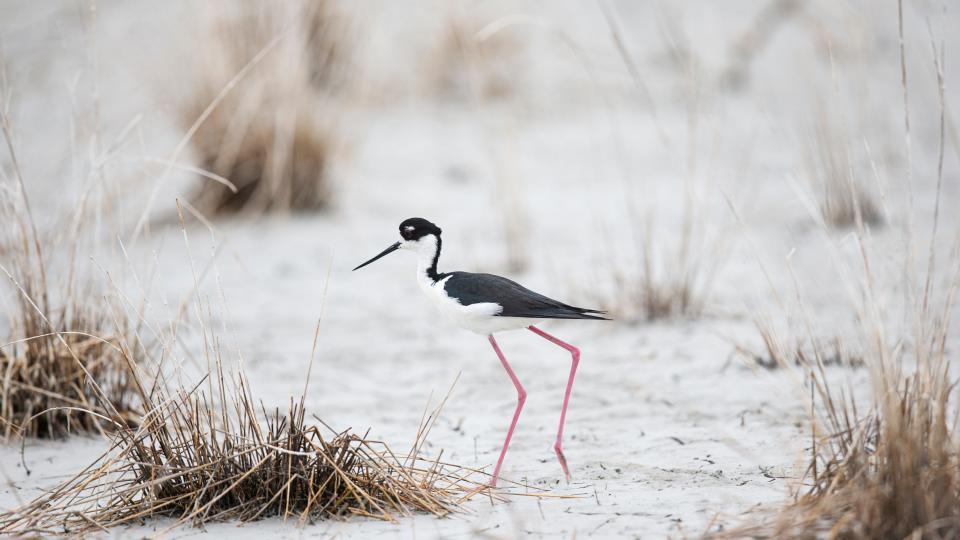
THE MOMENT: I love these little guys. They look like they are wearing a black tuxedo. Not an overly common sighting. They have long pink legs. Hence the name stilt. I got word from a friend that they were sighted at the Bailey Tract so I took a ride out there on a recent morning and came across several of them. There is also a nesting pair with eggs that had not hatched. It was overcast so the colors are not as vibrant but sometimes that is a good thing. The shadows are not as harsh. I also like the gray monotone background. It makes the bird stand out.
DEGREE OF DIFFICULTY: 5-8 depending on conditions.
The Anhinga
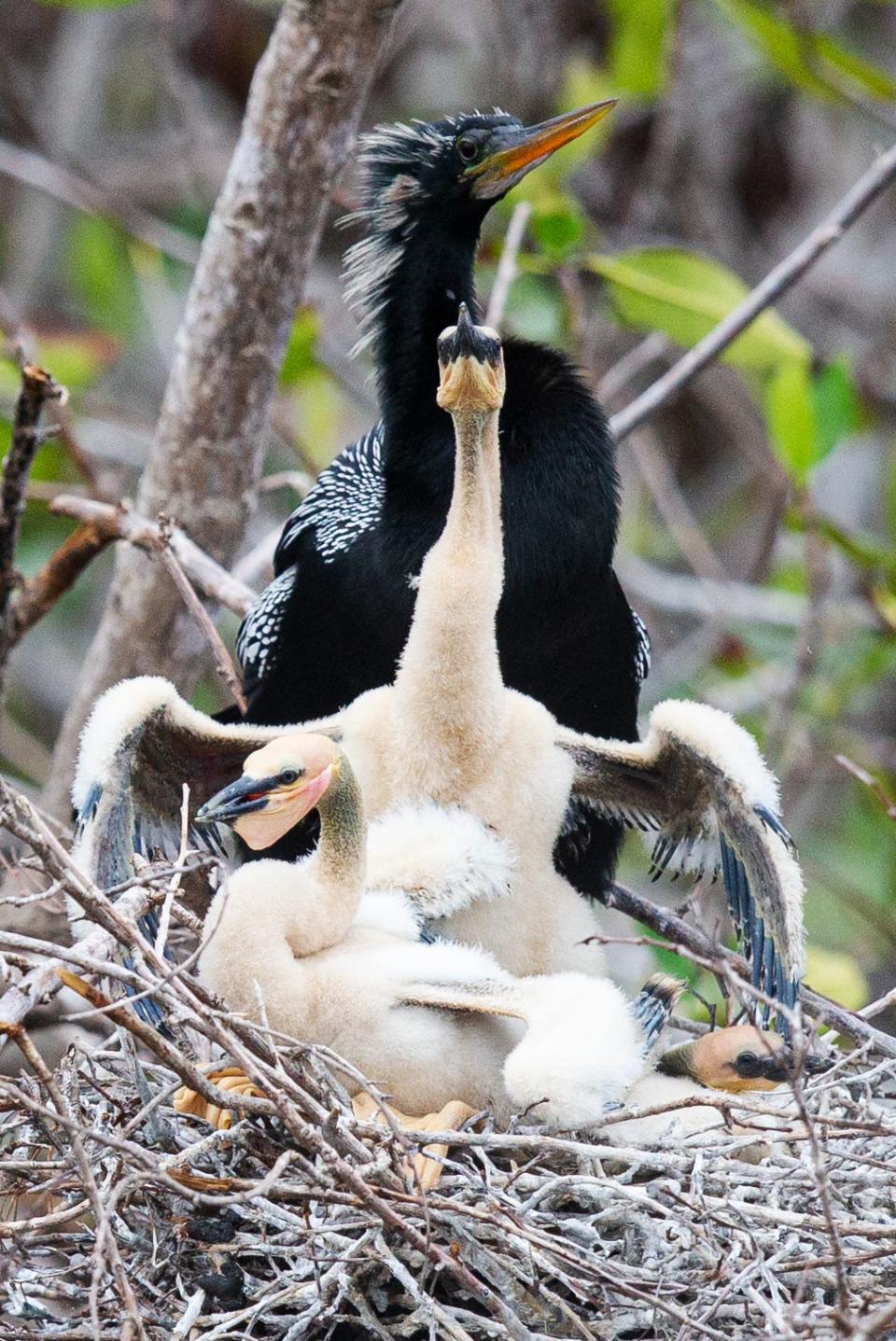
THE MOMENT: Anhingas are sometimes called "snake birds" because of their long necks. This photo is almost a little creepy because the baby chicks look like hydras. They are common sighting and are seen in all types of water bodies in Southwest Florida. They spear their prey and sometimes toss it in the air before it goes down the gullet.
DEGREE OF DIFFICULTY: 3 (I just waited for something to happen with the babies.)
Equipment used to photograph these birds in Fort Myers
West said these five images were shot with a Cannon 1DX. He used a 600 mm lens and a mono-pod.
More photos: See 54 images of wading birds in Southwest Florida
This article originally appeared on Fort Myers News-Press: Birding in Fort Myers Florida: herons, egrets, roseate spoonbills

